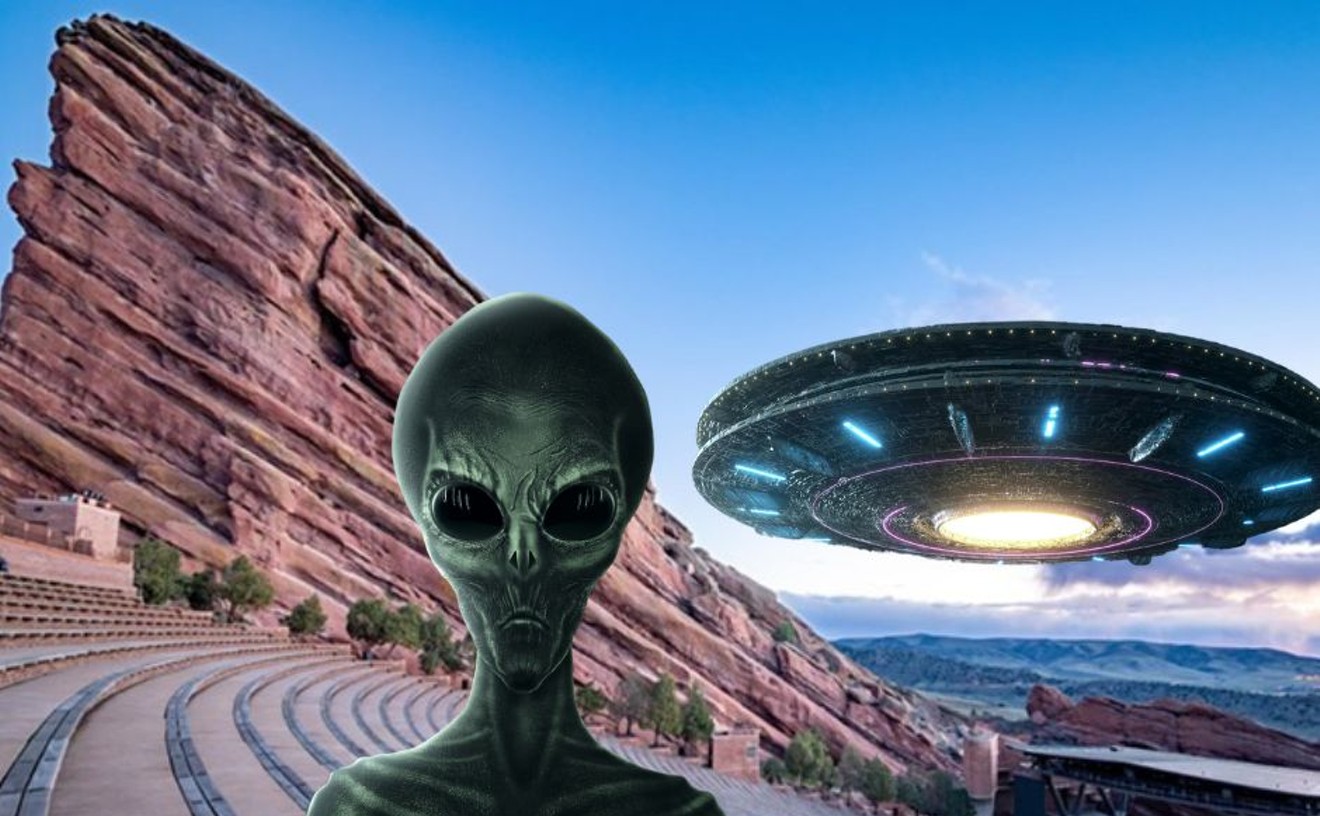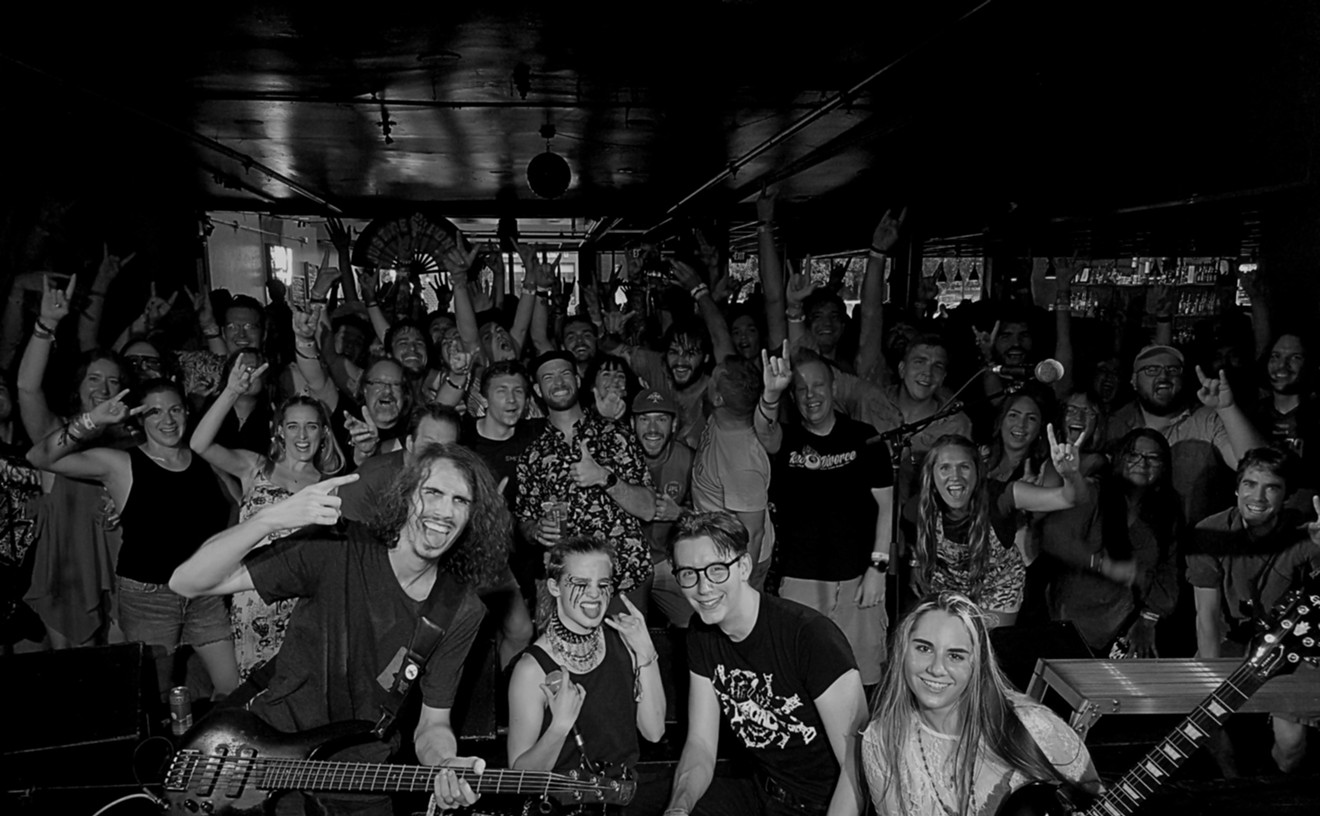The more things change, the more they stay the same. More than forty years after Phillips unleashed the Presley juggernaut on unsuspecting youth across the planet, Andre Young, known to rap fans as Dr. Dre, was trying to decide whose recording should be the first to appear on his new label, Aftermath Records--and rather than choosing an African-American artist, this onetime member of N.W.A. (Niggaz With Attitude) ultimately settled on Marshall Mathers, aka Eminem, a 24-year-old Detroit Caucasian. And a brilliant business move it was. While Eminem's delivery doesn't quite fit Phillips's Negroid model (he sounds more like a Dead End Kid from a Thirties-era Warner Bros. flick than the Beastie Boys ever did), his willingness to embrace hardcore topics and themes offers pale-faced consumers a white alternative to a black phenomenon, and they've responded in droves. Thanks to MTV's saturation airings of the video for the single "My Name Is," Eminem's Aftermath debut became an immediate, out-of-the-box smash; seven weeks after its release, The Slim Shady LP remains among the top five most popular platters in the country, with platinum-plus sales that continue to rise. In addition, Eminem received the cover-boy treatment by Rolling Stone (the only other male rap soloist I recall being so honored for his first album was--note the pigmentation--Vanilla Ice), and he's been denounced by legions of blue-nosed commentators and social activists, thereby guaranteeing him another much-appreciated burst of publicity.
Considering hip-hop's chart dominance of late, Eminem's success isn't unprecedented, but the manner in which it's happened is certainly instructive. On the surface, popular culture is more diverse than ever, with performers of every conceivable ethnic background existing--and profiting--side by side. But dig a little deeper and it becomes clear that this supposed rainbow coalition is as illusory as the fiction that America's racial conflicts are a thing of the past. (The apparent targeting of a black student, Isaiah Shoels, by the white gunmen at Columbine High School on April 20 is an especially horrifying indication that society has a very long way to go in this regard.) Segregation may have been struck down by the Supreme Court before Elvis discovered the joys of white jumpsuits and prescription-medicine abuse, but it remains a fact of life in American media. Some examples:
1. Radio stations continue to narrow-cast--program directors develop approaches that are intended to appeal to specific audiences differentiated by age, income and, yes, race. In this last case, buzzwords such as "urban" are used in place of "black" for reasons of political correctness. But the effect is the same: Listeners who want to hear a variety of styles are forced to switch back and forth between outlets that specialize in a single sound that they do to death day in and day out. The Denver-Boulder area is typical in this regard. Although survey after survey has shown that a sizable percentage of hip-hop discs are purchased by white consumers who also like rock, no commercial station here mixes the genres in any real way. Jocks at KXPK-FM/96.5 (the Peak) are currently spinning a Limp Bizkit tune from the Family Values Tour '98 compilation that includes turntable scratching, but any staffer taking the radical step of spotlighting a traditional rap track that sports the same technique would do so at the risk of his continued employment.
2. With only a few exceptions (such as Cosby and The Hughleys), shows that revolve around African-American characters are disappearing from major TV networks, with black actors being relegated more and more to supporting roles in sitcoms or dramas like NYPD Blue. Executives argue that the reasons for these decisions are primarily economic, pointing to such disasters as 1995's Under One Roof, a family series starring James Earl Jones that earned good reviews and miserable ratings (it was yanked from the schedule after just six episodes). Picking up the slack are services such as UPN and the WB, which have created shows that specifically cater to black viewers.
3. A handful of African-American actors have become legitimate film stars, yet when they take part in big studio productions, they are subject to restrictions concerning their roles that seem specific to their ethnicity. Denzel Washington, for instance, is seldom allowed to come across as a sexual figure, especially when he's cast opposite white actresses. In 1993's The Pelican Brief, he and Julia Roberts spend practically the entire movie together without making any overtures to each other, while 1996's Courage Under Fire removes the possibility that he and Meg Ryan might get it on by killing her character before the movie even starts; she is seen only in flashbacks that don't involve him. The Bone Collector, which is due out later this year, could well offer more of the same: Angelina Jolie is on the scene, but since the homicide detective Washington plays is a quadriplegic, don't expect the two of them to do a lot of bumping and grinding.
The phobia about mixed couplings is at the heart of the early protests against rock and roll (originally a slang term for sexual intercourse): Bigots saw something deeply unsettling about white teenage girls getting themselves worked up over, say, Chuck Berry. (Had they known about Berry's fondness for coprophilia--using feces for sexual pleasure--they no doubt would have gotten out the torches and pitchforks.) This ludicrous prejudice has lessened over time, and these days, a greater number of Americans than ever before see nothing wrong with people of different colors mating or marrying. But the cultural biases regarding such matters have deep roots, and as a result, plenty of young white women continue to feel that imagining themselves being deflowered by the likes of Busta Rhymes or Master P is a monumental sin.
That's where Eminem comes in. His music seems like forbidden fruit--always an aphrodisiac--but it serves this snack without violating racial taboos. (Mom probably wouldn't like him at first, but neither would she faint dead away the second he stepped into the room.) Eminem's hue serves an equally important function in regard to Caucasian males who identify with hip-hop but don't want to be seen as twerps of the sort satirized by the Offspring's "Pretty Fly (for a White Guy)." He makes it seem okay for honkies to like rap--particularly since he generally jokes his way through his version of it anyhow.
The cartoonish elements of Eminem's persona are frequently overlooked by his critics, but they're abundantly obvious. Slim Shady kicks off with "Public Service Announcement," in which narrator Jeff Bass declares that "the views and events expressed here are totally fucked and are not necessarily the views of anyone." In addition, he says, "Children should not partake in the listening of this album with laces in their shoe"; then, after Bass asks if he should add anything else, Eminem jumps in with, "Don't do drugs." That's immediately followed by "My Name Is," during which Our Hero describes his brain as dead weight because "I can't figure out what Spice Girl I want to impregnate." Later, "Guilty Conscience" finds Eminem debating with his inner voice about whether he should shoot a couple of clerks during a robbery (in the end, predictably, he comes out firing), while "If I Had" caps a seemingly straight-faced consideration of injustice with the bons mots "If I had a magic wand/I'd make the world suck my dick without a condom on."
The most memorable track on the CD, though, is "97' Bonnie & Clyde," a narrative in which Marshall takes his baby daughter along as he tosses the girl's just-murdered mom off a dock. The juxtaposition of Eminem's whimsical tone and the pledges of devotion he sends out to his real-life child, whose coos decorate the tune, is probably the only time that Slim Shady is truly surprising; otherwise, there's nothing here that the Insane Clown Posse hasn't already done. But it's still just a gag--a sop to viewers who rightly see Scream and I Know What You Did Last Summer as enjoyably stupid, not scary or disturbing. Compared to a legitimately good hip-hop disc, like the Roots' Things Fall Apart, Eminem's bow is impossibly lame--musically uninteresting, lyrically moronic--but it's also the ideal postmodern product for the 1999 marketplace.
The man who deserves the credit for the Eminem campaign isn't Mathers but Dr. Dre, as skillful a credibility peddler as exists on the scene today. He dedicated his landmark album, The Chronic, to "the niggaz that was down from day one," but it's arguable whether Dre himself fits that description. In the early Eighties he was part of a dance band called the World Class Wreckin' Cru that was anything but hardcore, as the late Eazy E, his former cohort in N.W.A., took great pleasure in pointing out. On one of his EPs, the Eazy one reproduced the photograph on this page, adding eye shadow, eyeliner, lipstick and an arrow pointed at Dre's crotch accompanied by the words "Nuthing but a she thang, baby." But despite such attacks, Dre has emerged with his reputation relatively unscathed, and in the case of Eminem, he's used it to his advantage. Simply by stamping his imprimatur on Mathers, Dre has transformed him from an obvious pretender into a genuine playa. Such is the power of the Doctor's approval.
Does Dre truly deserve to be a hero to keeping-it-real junkies? In a fiscal sense, it doesn't matter one bit. Even if his gangsta act is nothing more than a pose, he's a keen judge of what sells--and Eminem does. Furthermore, he knows better than most that the more Eminem is attacked by the arbiters of taste, the more profitable he'll become. The sound you hear is his accountant chuckling with delight.
Of course, there's a very real possibility that Mathers doesn't understand any of this: He's less a noteworthy artist than a smart-assed dolt whose timing happens to be good. (I hope someone's telling him to sock his dough away, or else ten years from now, he'll be starring on an especially pathetic edition of VH1's Behind the Music.) And if he's also a curious reflection of the racial chasm that continues to divide this country, that doesn't mean he'll be sticking around. Elvis was built to last, but Eminem will be disappearing soon. Too bad he won't be taking his baggage with him.
Eminem, with the Beatnuts. 7:30 p.m. Sunday, May 2, Music Hall at Lodo, 1902 Blake Street, $20-$22, 303-298-7994.











